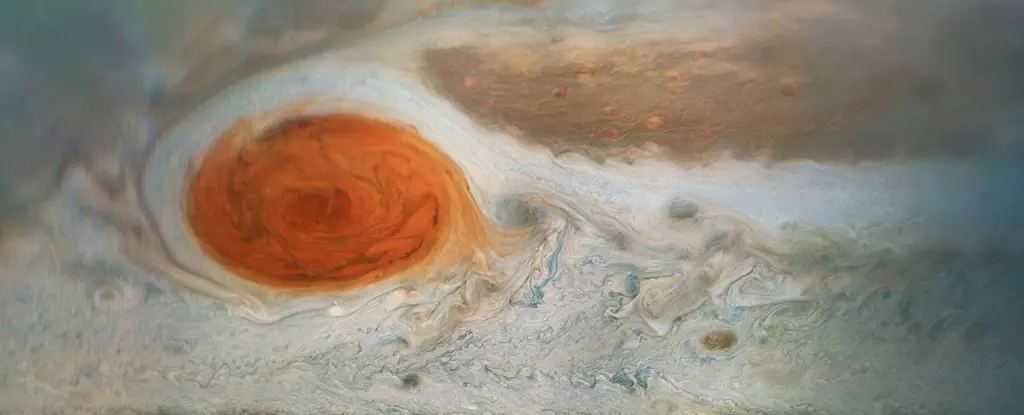Jupiter’s Great Red Spot (GRS) has captivated astronomers for centuries, with its massive anti-cyclonic storm rotating counterclockwise. The storm, larger than Earth itself, has wind speeds exceeding 400 km/h (250 mp/h). Observations of the GRS date back to at least the 1600s, with conflicting reports on its formation and longevity. The earliest known observation of the spot traces back to 1632 by a German Abbott, followed by continuous observations by various astronomers until 1713, with Giovanni Cassini naming it the Permanent Spot. However, the spot disappeared from sight for 118 years, leaving scientists puzzled about its nature and origins.
Recent research published in Geophysical Research Letters sheds light on the origins of Jupiter’s Great Red Spot. Led by Professor Agustín Sánchez-Lavega, the study combines historical records with computer simulations to understand this enigmatic meteorological phenomenon. The researchers suggest that the current GRS is not the same spot observed by Cassini, proposing that the earlier storm likely disappeared between the mid-18th and 19th centuries. Therefore, the longevity of the Red Spot now exceeds 190 years, and has significantly shrunk from its 1879 length of 39,000 km to 14,000 km with a more rounded shape.
While historical records offer valuable insights, modern technology has revolutionized our understanding of the GRS. Space telescopes and spacecraft like Voyager 1, Galileo, and Juno have provided detailed images and data on Jupiter and the GRS. Juno, in particular, captured images of the GRS from just 8,000 km above the surface, revealing intricate details and dimensions previously unseen. The depth of the GRS was measured to be relatively thin compared to its horizontal length, offering new perspectives on this colossal storm.
Supercomputer simulations have played a crucial role in understanding the formation of the GRS. Researchers examined various forces that could generate the storm, including the eruption of superstorms and merger of smaller vortices. However, these mechanisms did not align with the properties of the GRS. Simulations of Jupiter’s known winds, particularly the South Tropical Disturbance (STrD), produced an anti-cyclonic storm resembling the GRS. This elongated shell trapped different winds in the region, eventually evolving into the coherent and compact form seen today.
The study’s simulations suggest that the GRS originated from a long cell resulting from the STrD disturbances, which compacted over time to form the current GRS. This process likely began in the mid-1800s, making the GRS approximately 150 years old. The mystery of Jupiter’s Great Red Spot continues to intrigue scientists, with ongoing research shedding new light on this enigmatic storm that has defied explanations for centuries.


Leave a Reply